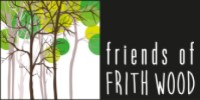Frith Wood Bussage (not to be confused with Frith Wood Slad) is known to have existed as a wood in 1520, when it was acquired by Corpus Christi College Oxford, which then owned it till the first part of the 20th century. The wood survives because of its usefulness: for most of its existence it was coppiced (regularly cut to near ground level) and cropped for firewood, sticks and other uses, with animals grazing amongst the trees. Income was generated for its owners for centuries. Today, foresters still say ‘The wood that pays is the wood that stays’, even if income today is from other sources and the wood provides different goods.
Formerly extending down the hillside south of the Frith (as seen in the photo), the current trees, mostly beech, tall and rather spindly, are thought to have regenerated after the Second World War, when mature trees were felled. Ideally, a wood has a greater mix of species and more room for the trees, but it is a healthy wood with some rare woodland plants.
A generation ago, there were many dumped fridges and BMX tracks. Today, dumping is less acute – and the bikes have changed! The wood is for everyone, and will require careful management to conserve and protect an ecosystem that is challenged by the number of people, climate change (with beech being vulnerable) and tree disease.
Most of the wood’s 9ha are owned by Robert Hitchins Ltd who built the Manor Farm Estate, the rest by Chalford Parish Council. We are hopeful that this might change and the whole wood could come into community ownership. What difference would this make? The wood would be managed for wildlife, for its climate change benefits and for local people, in perpetuity. This would be the long-term and incalculable value of a wood which has been quietly proving its worth for hundreds of years.
